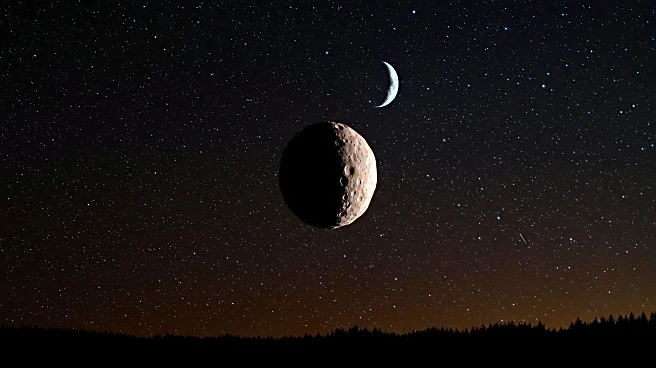What's Happening?
Asteroid 89 Julia has reached opposition in the constellation Aquarius, making it visible throughout the night. At a magnitude of 8.5, it can be observed using binoculars or telescopes. Julia's highest point in the sky occurs around 1 A.M. local daylight time, positioned near the star Nu Aquarii. Nearby celestial objects include M73, a potential asterism, and M72, a globular cluster best viewed with larger telescopes. Observational timing is supported by local sunrise, sunset, moonrise, and moonset times.
Why It's Important?
The opposition of Asteroid Julia provides a unique opportunity for astronomers and enthusiasts to observe a celestial body that is not always easily visible. This event highlights the importance of tracking asteroids, which can offer insights into the composition and behavior of objects within our solar system. Observing such events can also foster interest in astronomy and science education, encouraging public engagement with space exploration and research.
What's Next?
As Asteroid Julia remains visible throughout the night, astronomers and hobbyists may continue to track its movement across the sky. This event may prompt further observations and studies on the asteroid's characteristics and trajectory. Additionally, the visibility of nearby celestial objects like M73 and M72 offers further opportunities for exploration and study, potentially leading to new discoveries or insights.
Beyond the Headlines
The visibility of Asteroid Julia and nearby celestial objects underscores the vastness and complexity of our solar system. Events like these can inspire curiosity and wonder about the universe, encouraging individuals to learn more about astronomy and the scientific methods used to study space. This can also lead to discussions about the role of asteroids in planetary defense and the potential for future space missions.












